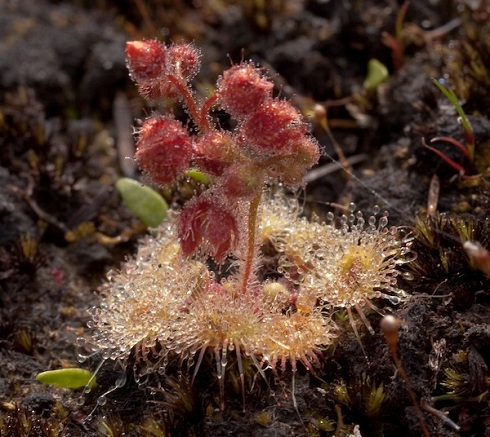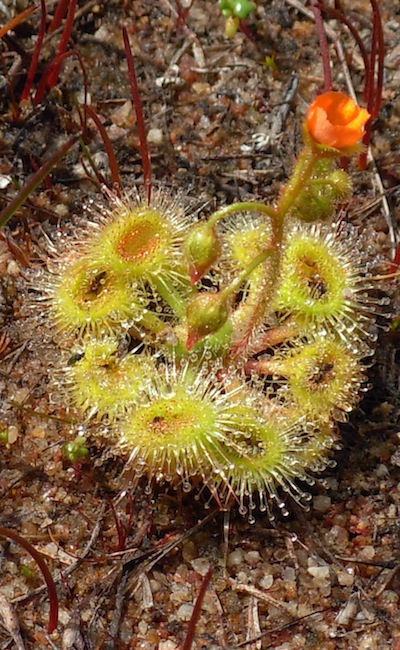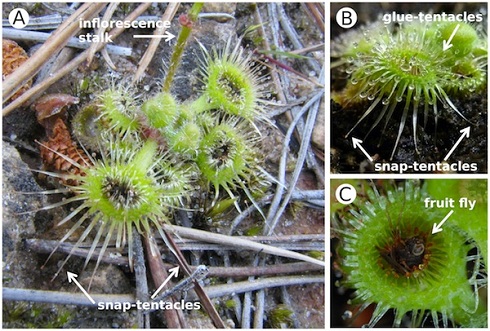Snappy meals for a hungry plant


I’m a big fan of carnivorous plants. Seriously, they’re plants which eat animals, placing them oddly higher up the food chain than other plants – That always fascinated me. But a recent study on one Australian sundew has shown it to be even more fascinating than was previously thought.
This sundew, with the rather poetic latin name of drosera glanduligera, has an edge over other sundew species. Most sundews wait patiently for insects to be lured to their sticky doom on those drops of “dew” on the plant’s glue tentacles. In the meantime though, they don’t have much other choice than to sit and wait for their meals to arrive. D. glanduligera here, has an added bonus to its traps – dubbed snap tentacles, which serve to keep this plant particularly well fed by helping to ensnare prey.
Fast motion in plants is an exceptionally rare trait. Most people will be familiar with venus flytraps, or the “sensitive plant” mimosa pudica. With sundews, only the tropical species move particularly fast – sundews in colder climates are in no hurry to digest their doomed prey. But for a long time, d. glanduligera was something of a mystery. The exact purpose of the long tentacles, with their curious jerking motions, growing on the undersides of the traps was difficult to fully fathom. Difficult, that is, until a recent study showed that these snap tentacles are extremely efficient catapults which help this hungry little plant survive by flinging the plant’s prey directly into the gaping maws of those traps.
The reason for d. glanduligera’s unusual traps are because this plant needs to be active to survive. It grows fast and lives for only a year, so it needs a good supply of nutrients and can’t afford for its food to get away. Thomas Speck, a co-author on the paper, pointed out how this plant’s catapult system is so effective that the insect virtually never escapes, joking that were the plant a hundred times larger he’d rather not walk around South Australia! What’s more, its environment is steady and unchanging, allowing this plant to become such a specialist without the fear of any surprises. It’s a rather fantastic little example of the sort of things evolution can come up with when it has the chance.

Snap tentacles make this sundew much more deadly than most other carnivorous plant species. They’re highly sensitive and have a response time of around 400 milliseconds making them among the fastest traps known – faster than our beloved venus flytraps. Before an insect knows what’s happening, it’s already too late. Once catapulted into the glue tentacles on the upper side of the plant’s leaves, the insect’s fate is sealed. Those glue tentacles, also remarkably fast for a sundew, rapidly move the insect to the centre of the trap, where it is digested by the plant. If you’re curious, you can even watch a video of the plant in action!
It’s amazing what plants can be capable of, given the right opportunities. The full study is published for all to see, through PLOS One, doi:10.1371/journal.pone.0045735.g001

Hammonds M (2012-10-08 06:12:32). Snappy meals for a hungry plant. Australian Science. Retrieved: Nov 17, 2025, from https://ozscience.com/biology/snappy-meals-for-a-hungry-plant/
 Follow
Follow